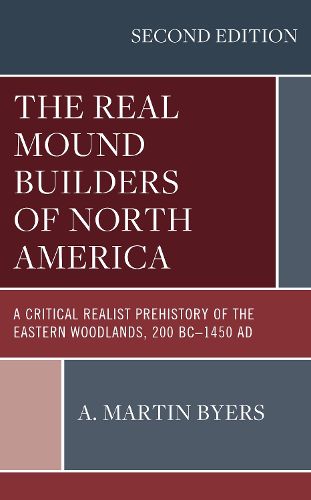Readings Newsletter
Become a Readings Member to make your shopping experience even easier.
Sign in or sign up for free!
You’re not far away from qualifying for FREE standard shipping within Australia
You’ve qualified for FREE standard shipping within Australia
The cart is loading…






The Real Mound Builders of North America takes the standard position that the cultural communities of the Late Woodland period hiatus-when little or no transregional monumental mound building and ceremonialism existed-were the linear cultural and social ancestors of the communities responsible for the monumental earthworks of the unique Mississippian ceremonial assemblage, and further, these Late Woodland communities were the direct linear cultural and social descendants of those communities responsible for the great Hopewellian earthwork mounds and embankments and its associated unique ceremonial assemblage. Byers argues that these communities persisted largely unchanged in terms of their essential social structures and cultural traditions while varying only in terms of their ceremonial practices and their associated sodality organizations that manifested these deep structures. This continuist historical trajectory view stands in contrast to the current dominant evolutionary view that emphasizes abrupt social and cultural discontinuities with the Hopewellian ceremonial assemblage and earthworks, mounds and embankments.
$9.00 standard shipping within Australia
FREE standard shipping within Australia for orders over $100.00
Express & International shipping calculated at checkout
The Real Mound Builders of North America takes the standard position that the cultural communities of the Late Woodland period hiatus-when little or no transregional monumental mound building and ceremonialism existed-were the linear cultural and social ancestors of the communities responsible for the monumental earthworks of the unique Mississippian ceremonial assemblage, and further, these Late Woodland communities were the direct linear cultural and social descendants of those communities responsible for the great Hopewellian earthwork mounds and embankments and its associated unique ceremonial assemblage. Byers argues that these communities persisted largely unchanged in terms of their essential social structures and cultural traditions while varying only in terms of their ceremonial practices and their associated sodality organizations that manifested these deep structures. This continuist historical trajectory view stands in contrast to the current dominant evolutionary view that emphasizes abrupt social and cultural discontinuities with the Hopewellian ceremonial assemblage and earthworks, mounds and embankments.